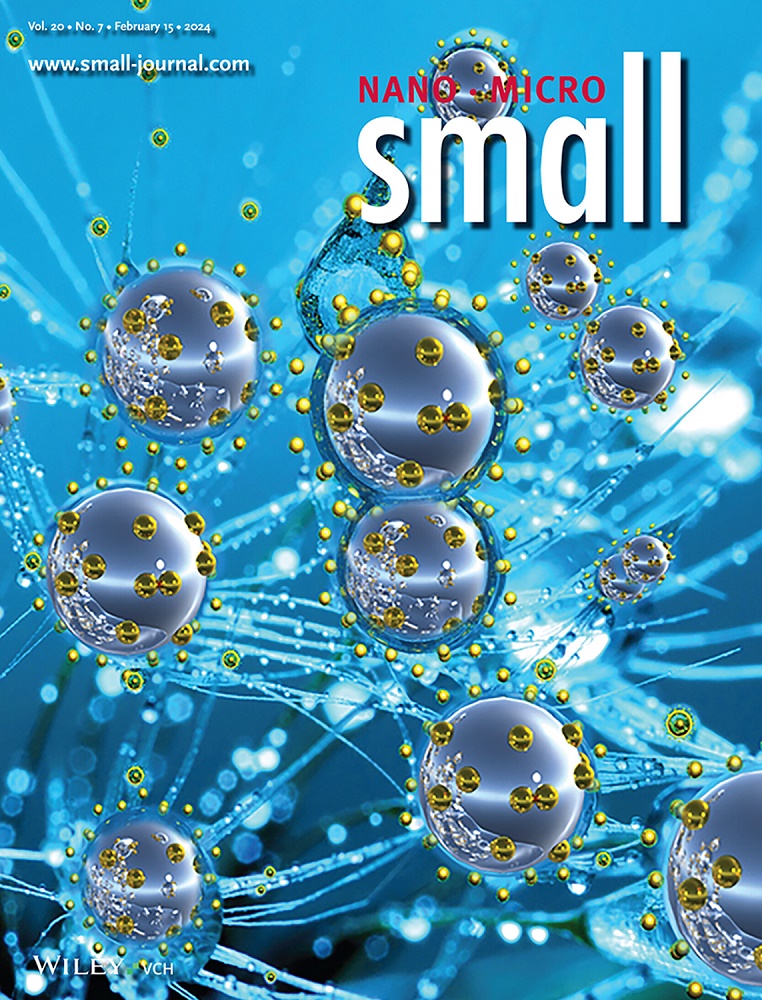P‐Doped NiCo2S4/CoZn‐LDH Layered Heterostructures: Synergistically Improved Conductivity and Enhanced OH− Adsorption for High‐Performance Asymmetric Supercapacitors
IF 12.1
2区 材料科学
Q1 CHEMISTRY, MULTIDISCIPLINARY
引用次数: 0
Abstract
Doping induces lattice distortion and modifies the electronic structure of materials, thereby enhancing their electrical conductivity and chemical stability. The built‐in electric field at heterojunction interfaces further promotes charge carrier migration and improves surface reaction kinetics. To leverage these synergistic effects, this study employs a combined approach involving sulfidation, phosphidation, and electrodeposition to achieve P‐doping and construct a heterojunction layered structure. Specifically, P‐doping is implemented through a phosphorization treatment of NiCoP掺杂NiCo2S4/CoZn - LDH层状异质结构:协同改善高性能非对称超级电容器的电导率和增强OH -吸附
掺杂引起晶格畸变,改变材料的电子结构,从而提高材料的导电性和化学稳定性。异质结界面处的内建电场进一步促进了载流子迁移并改善了表面反应动力学。为了利用这些协同效应,本研究采用了包括硫化、磷化和电沉积在内的综合方法来实现P掺杂并构建异质结层状结构。具体来说,P掺杂是通过对泡沫镍上生长的NiCo2S4进行磷化处理,然后在蜂窝状NiCo2S4衬底上电沉积CoZn层状双氢氧化物(LDH)来实现的。密度泛函理论计算表明,这种独特的结构设计显著提高了复合材料的导电性,优化了OH -离子的吸附能,从而显著改善了离子/电子反应动力学。所得P‐NiCo2S4@CoZn‐LDH电极在电流密度为5 mA cm−2时具有15.00 F cm−2的高面电容。当组装成不对称超级电容器(P‐NiCo2S4@CoZn‐LDH//活性炭(AC))时,该器件在205.76 W kg−1的功率密度下实现了53.75 Wh kg−1的能量密度,在10,000次循环后保持了77.36%的电容保持率。这些发现突出了掺杂和异质结工程在增强电荷传输和离子吸附能力方面的协同效益,为开发高性能超级电容器提供了一个有前途的策略。
本文章由计算机程序翻译,如有差异,请以英文原文为准。
求助全文
约1分钟内获得全文
求助全文
来源期刊

Small
工程技术-材料科学:综合
CiteScore
17.70
自引率
3.80%
发文量
1830
审稿时长
2.1 months
期刊介绍:
Small serves as an exceptional platform for both experimental and theoretical studies in fundamental and applied interdisciplinary research at the nano- and microscale. The journal offers a compelling mix of peer-reviewed Research Articles, Reviews, Perspectives, and Comments.
With a remarkable 2022 Journal Impact Factor of 13.3 (Journal Citation Reports from Clarivate Analytics, 2023), Small remains among the top multidisciplinary journals, covering a wide range of topics at the interface of materials science, chemistry, physics, engineering, medicine, and biology.
Small's readership includes biochemists, biologists, biomedical scientists, chemists, engineers, information technologists, materials scientists, physicists, and theoreticians alike.
 求助内容:
求助内容: 应助结果提醒方式:
应助结果提醒方式:


